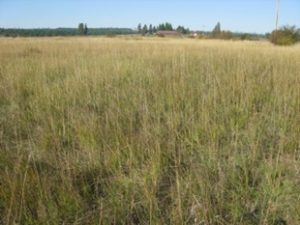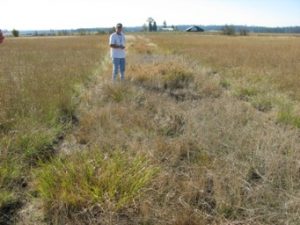Lewis and Clark travelled from present day Montana, over the Bitterroot Mountains, and descended toward the Snake River, starving and destitute. At Weipe Prairie in the late summer of 1806 they met the Nez Perce collecting native bulbs for food, and the Lewis and Clark members were fed on this plants and regained their health. This plant, camas (Camassia quamash), forms masses in mountain meadows throughout this region of Idaho, and was a primary food source for native peoples. The Weipe prairie was late homesteaded by white settles who drained the meadows, planted Eurasian pasture grasses, such as timothy (Phleum pratensis), which was mowed to produce hay for livestock. The character of this historic and culturally important vegetation has nearly disappeared under the management of hay pasture. The Weippe prairie is now part of the NPS managed Nez Perce National Historical Site, and NPS desires to restore these areas to their historical hydrologic regime and vegetation. We have initiated a study to characterize the prairie, its hydrologic regime, the effects of multi-scale ditches and drains that occur in the area, and to develop concepts and pilot projects for restoration. We are measuring water levels in the gully, ground water levels, soil redox potential, and vegetation composition.
A draft report is attached; Weippe 2012 progress report

